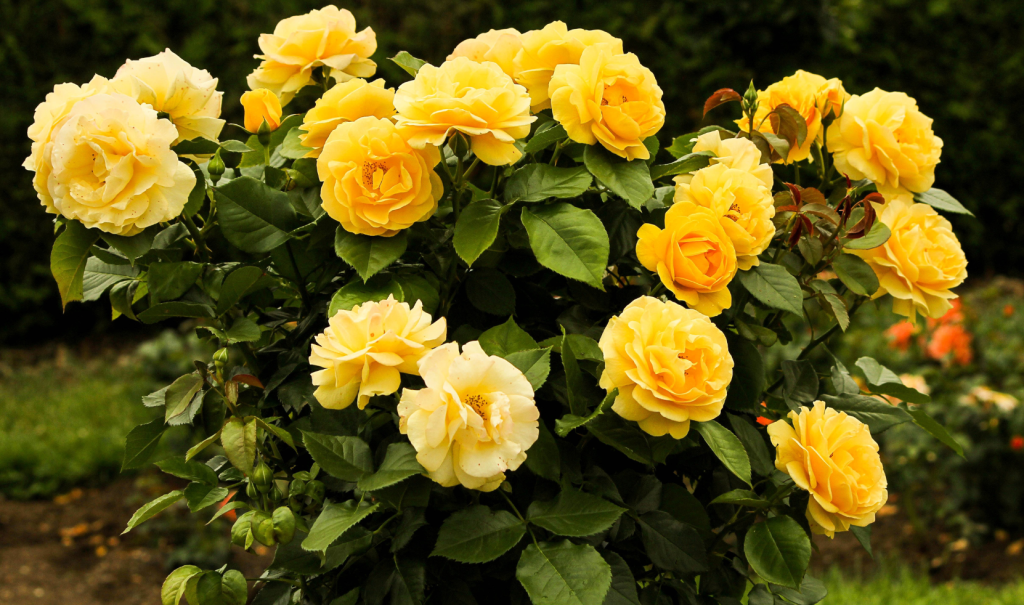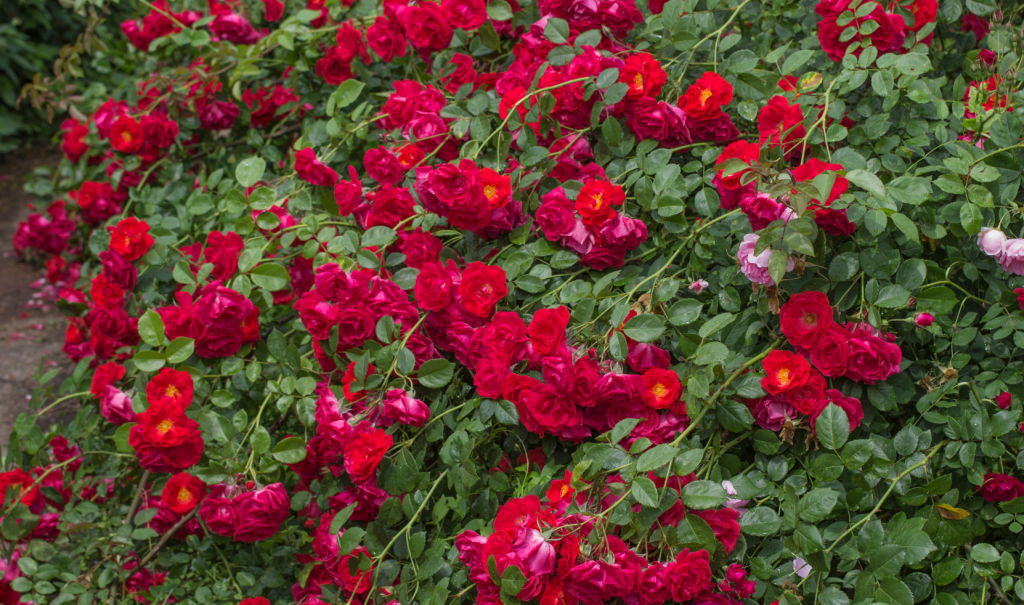Roses have long been cherished for their beauty, fragrance, and symbolism. Among the many varieties available, long stem roses stand out due to their elegant and eye-catching appearance. They are often used in floral arrangements for special occasions like weddings, anniversaries, and romantic gestures. Understanding how long stem roses grow is essential for any gardening enthusiast or florist aiming to cultivate these stunning plants successfully. In this guide, we will explore every aspect of growing long stem roses—from selecting the right type to propagation techniques, care tips, and common issues.
What Are Long Stem Roses?
Long stem roses refer to rose plants that produce elongated stems with well-formed blooms at the top. These stems can be significantly longer than traditional rose stems, making them ideal for cut flowers and floral arrangements. Long stem roses are predominantly hybrid tea roses but can also include other varieties that produce similar characteristics.
Why Choose Long Stem Roses?
Long stem roses offer several advantages:
- Aesthetic Appeal: Their graceful appearance makes them a favorite for arrangements and bouquets.
- Versatility: They can be used in various floral displays, from elegant weddings to simple home decorations.
- Longevity: With proper care, long stem roses can last longer as cut flowers compared to shorter-stemmed varieties.
Types of Long Stem Roses
Before diving into the cultivation process, it’s essential to understand the different types of roses that produce long stems:
1. Hybrid Tea Roses
Hybrid tea roses are renowned for their large, solitary blooms on sturdy stems. They are often bred for their beauty and fragrance, making them a top choice for floral arrangements.
2. Floribunda Roses
While typically shorter-stemmed than hybrid teas, some floribunda varieties can still produce longer stems when cultivated with care.
3. Climbing Roses
Climbing varieties can also produce long stems as they grow upward along trellises or fences.
4. Grandiflora Roses
A hybrid between hybrid tea and floribunda roses, grandiflora roses feature large blooms on taller stems.
Each type offers unique characteristics that can enhance your garden or floral designs.
Best Time to Plant Long Stem Roses
Timing plays a crucial role in successfully growing long stem roses. The best time to plant these roses varies depending on your climate zone:
Early Spring
For most regions, early spring is considered the best time to plant bare-root or potted rose plants. The soil is usually workable at this time of year.
Late Spring
In some areas where frost may still be a concern in early spring, late spring can also be suitable for planting.
Fall Planting
In warmer climates, early fall is an excellent time for planting as well. This allows roots to establish before winter dormancy.
Seasonal Summary
- Early Spring: Ideal for bare-root roses.
- Late Spring: Good for pot-grown varieties.
- Early Fall: Suitable in warmer regions.
Preparing the Planting Site
Choosing the right location and preparing it properly is crucial for healthy long stem rose growth:
1. Sunlight
Long stem roses thrive in full sunlight; aim for at least six hours of direct sunlight daily.
2. Soil Requirements
Roses prefer well-drained soil rich in organic matter:
- Mix compost or well-rotted manure into your soil.
- Conduct a soil test to ensure proper pH levels (ideally between 6.0 and 6.8).
3. Drainage
Ensure that water does not pool around your rose plants:
- If you have heavy clay soil, consider creating raised beds or adding sand to improve drainage.

Planting Long Stem Roses
Now that you’ve prepared your site, it’s time to plant your long stem roses!
Step-by-Step Planting Guide
- Digging the Hole: Create a hole about two feet wide and one foot deep.
- Soil Amendments: Add organic matter at the bottom of the hole.
- Placing the Rose: If using bare-root plants, spread out the roots gently in the hole; ensure that the graft union (swelling on the stem) is just above soil level.
- Filling the Hole: Cover the roots with soil while ensuring there are no air pockets.
- Watering: Water thoroughly after planting to help settle the soil around the roots.
Propagation Techniques for Long Stem Roses
If you’re looking to expand your collection or propagate new plants from existing ones, there are several methods you can use:
1. Using Cuttings
Rose cuttings can effectively create new plants if done correctly.
Types of Cuttings:
- Softwood Cuttings: Taken from new growth during late spring or early summer when stems are flexible.
- Semi-Hardwood Cuttings: Collected during late summer or early fall when wood is partially matured.
- Hardwood Cuttings: Best taken in late fall or winter during dormancy.
Step-by-Step Guide for Taking Cuttings
- Select Healthy Stems: Choose vigorous stems from a healthy mother plant.
- Cutting Process:
- For softwood cuttings: Cut 6-8 inch segments at a 45-degree angle below a leaf node using sharp shears.
- For semi-hardwood cuttings: Use slightly thicker stems taken from later summer growth.
- For hardwood cuttings: Take sections about 6-12 inches long during dormancy.
- Removing Lower Leaves: Strip lower leaves off while keeping just a few at the top; this helps focus energy on root development.
- Using Rooting Hormone: Dip the cut end into rooting hormone powder to promote root formation.
- Planting Cuttings: Place them in pre-prepared containers with well-drained potting mix or directly into garden beds prepared earlier; ensure they are kept moist but not overwatered.
2. Using Layering Techniques
Another propagation method involves layering branches from existing rose plants:
- Bend a healthy stem down towards the ground and cover it lightly with soil while leaving the tip exposed.
- Roots will form at points buried in soil over time; once established, sever it from parent plant and transplant!

Care Requirements for Long Stem Roses
Growing long stem roses requires attentive care throughout their lifecycle:
Watering
- Water deeply about once or twice per week rather than light daily watering sessions; deep roots encourage better drought resistance later on!
Fertilization
- Use balanced fertilizers during active growing seasons (spring through early fall). 2.. Organic options like compost enhance soil health while feeding your plants naturally—allowing them grow vigorously producing lush foliage abundant blooms displayed proudly!
Pruning Techniques
Pruning is essential not only for aesthetics but also for encouraging new growth: 1.. Aim to prune during late winter before new buds emerge—this ensures old wood doesn’t choke young shoots! 2.. Remove any dead or diseased wood while thinning crowded areas inside bush allowing air circulation preventing fungal issues arise!
Pest Management & Disease Prevention
Roses can fall prey pests such as aphids and spider mites along with diseases like black spot:
1.. Regularly inspect leaves looking signs infestations! 2.. For aphids try releasing ladybugs into garden—these helpful insects devour pests protecting your prized blooms! 3.. Use insecticidal soap as an organic solution combat other harmful bugs without affecting beneficial species present! 4.. Maintain good air circulation by ensuring pruning completed regularly aiding prevention against mildew buildup caused by stagnant moisture conditions!

Environmental Factors Affecting Growth
To cultivate thriving long-stemmed roses requires understanding environmental conditions affecting overall development:
1.. Soil Type matters greatly! It’s important ensure well-draining substrate achieved—especially important during rainy seasons! 2.. Sunlight Exposure must remain optimal—insufficient light leads weak growth potential shortening flower lengths desired while encouraging diseases develop more readily! 3.. Temperature Fluctuations can also play significant roles especially during winter months protecting young plants crucial maintaining warmth ensuring survival across seasons transitions endure resiliently!
The Importance of Root Development
Healthy root systems form backbone supporting successful rose cultivation enabling stability nurturing proper nutrient uptake! Here’s what you should know:
1.. Strong roots provide structural integrity preventing toppled bushes particularly under heavy winds ensuring optimal performance grows within garden environment! 2.. Mycorrhizal fungi enhance root systems by facilitating nutrient exchange allowing deeper access surrounding soils resources sustaining lifeblood those blossoming beauties further enhancing overall aesthetic satisfaction created within spaces enjoyed immensely around community delight shared collectively experiences blossoming amidst fragrant aromas enlivened warmth cultivated nurtured alongside heartfelt connections forged beautifully cherished timelessly passed down treasured generations honoring legacies blooming passionately expanding dreams realized creatively manifest reverberating joy expanding horizons lived experiences marked throughout collective journey shared within gardens filled love memories engraved deeply etching lives intertwining naturally eternally uplifting sentiments gathered across bonds celebrated cultivated lovingly nurtured continually flourishing together celebrating beauty life grants us—all found effortlessly emanated joyfully!
Seasonal Considerations & Flowering Times
Being aware when different types bloom helps maximize enjoyment gained through varied aesthetics displayed garden year-round:
1.. Most modern hybrids produce blooms late spring into early summer season requiring consistent monitoring temperatures climate fluctuations impacting flowering times successively altering rhythms frequently experienced throughout respective growing cycles observed regularly emerging patterns surrounding environmental factors influencing outdoor settings significantly adjusted accordingly sustaining flourishing vivid colors throughout arrangements created dedicated proudly showcasing seasonal delights delicately embodied wonderfully reflecting artistry witnessed blooming landscapes breathless beauty!
Focusing efforts on nurturing adequate moisture levels during particularly hot months is essential for ensuring that long stem roses thrive. Proper hydration significantly increases the chances of seeing timely and spectacular blooms, showcasing the artistry of each flower. To achieve this, it is crucial to establish a regular watering routine.
Watering Practices
- Deep Watering: Water deeply rather than frequently, encouraging root systems to grow deeper into the soil. This practice helps the roses withstand dry spells more effectively.
- Morning Watering: Watering in the early morning allows plants to absorb moisture before the heat of the day, minimizing evaporation and helping prevent fungal diseases.
- Mulching: Applying a layer of mulch around the base of the rose plants helps retain soil moisture, suppress weeds, and regulate soil temperature.
Fertilization Strategies
Using the right nutrients can also enhance bloom production. During the growing season, feed your long stem roses with a balanced fertilizer specifically formulated for roses. This helps in developing strong stems and vibrant blooms:
- Organic Fertilizers: Consider using compost or organic fertilizers to provide essential nutrients gradually while improving soil health.
- Timing: Fertilize your roses in early spring as they begin their growing cycle and again in late spring for sustained growth throughout the blooming season.
Caring for Stems
To encourage longer stems with beautiful blooms, pay attention to pruning techniques:
- Pruning: Prune your roses in late winter or early spring, removing dead wood and any crossed branches that may obstruct light and airflow. This not only shapes the plant but promotes healthy new growth.
- Spacing: When planting, ensure there is adequate space between rose bushes to allow for air circulation, reducing the risk of disease while promoting growth.
- Support Structures: As your long stem roses grow taller, consider using stakes or trellises to support them if necessary, ensuring they remain upright and can develop strong, straight stems.
The Importance of a Strong Foundation
Ultimately, nurturing your long stem roses requires commitment and attention to detail. By focusing on adequate watering practices, proper nutrition, effective pruning, and creating supportive environments for growth, you will foster healthy rose plants capable of producing exquisite blooms.
Building these care routines forms a bond with your garden as you witness each stage of development from planting to blooming. Every joyful moment spent caring for these flowers reinforces a deep appreciation for their beauty and resilience—a rewarding experience for both novice gardeners and seasoned rose enthusiasts alike.

